Artist Profile: Dena Yago
Posted by <Günseli Yalcinkaya> on 2023-02-23
Being an artist means being exploited by market powers, and nowhere has this been more apparent than the rise of social media. With user-generated content, the artist is both influencer and content creator, the artwork they create, and the network of people and places they post, are quantified and instrumentalised. For New York artist Dena Yago, this is both the inspiration and method by which she explores her visual practice, using the language of consumer culture and everyday objects to interrogate emergent issues facing society today.
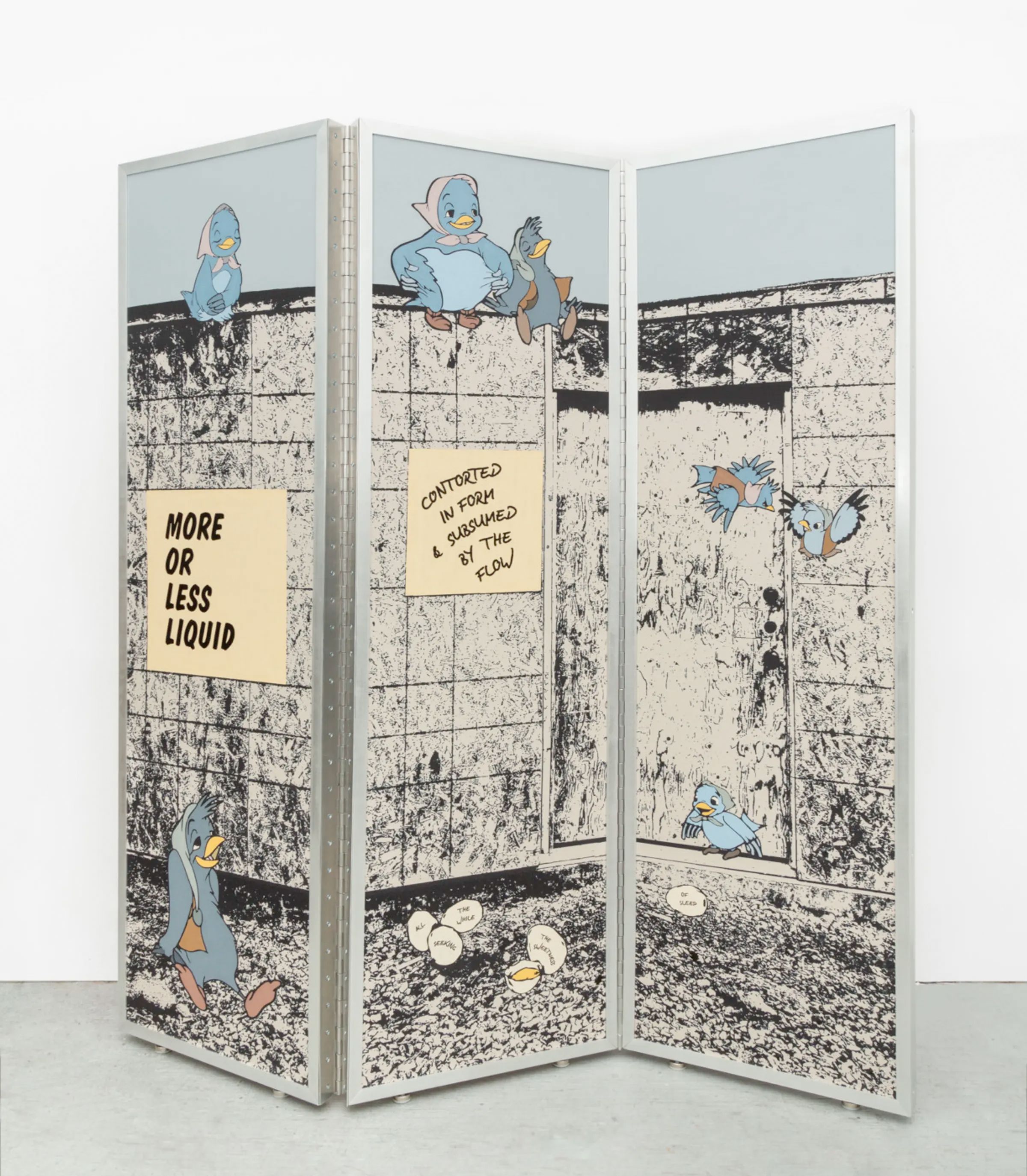
The Onlookers, 2022, Acrylic and inkjet on canvas in 3 panel aluminium paravent, 34 1/8 x 73 1/8 x 3 in
Yago graduated from Columbia University in 2010 during a time when post-internet art, and net collectives such as Jogging and DIS Magazine, were gaining momentum. At that time she began her career as one of the founding members of the website Are.na, a community-based platform. Dubbed “the anti-Facebook”, the artist-led site had no ads or algorithms, but rather functioned as an online space for users to simply collect, curate and share images or information that interested them. “When I moved to New York at the age of 18, most of my friends who were artists all met on surf clubs like Loshadka, and then when I was working on Are.na, that felt like a community to me as well,” Yago tells me. “People were trying to be artists in slightly different ways, and there was the promise of market success because we saw peers who were doing really well. But that was never really something I felt was a reality to me for a variety of reasons, so I had to split my art practice with consulting work in order to fund it.”
The same year, Yago, alongside fellow artists Greg Fong, Sean Monahan, Emily Segal and Chris Sherron, founded K-HOLE, the New York-based collective that functioned as a trend forecasting agency and went viral in 2014 for coining the term “normcore”. “During that period I was really trying to keep the art autonomous in some way where it wasn't really like negotiating these other ways of working that I had to do just to get by, which has drastically changed,” she explains. “Over the last 13 years now I've been understanding the porousness between those different ways of working – primarily the language that I deal with in trend forecasting and strategy.”
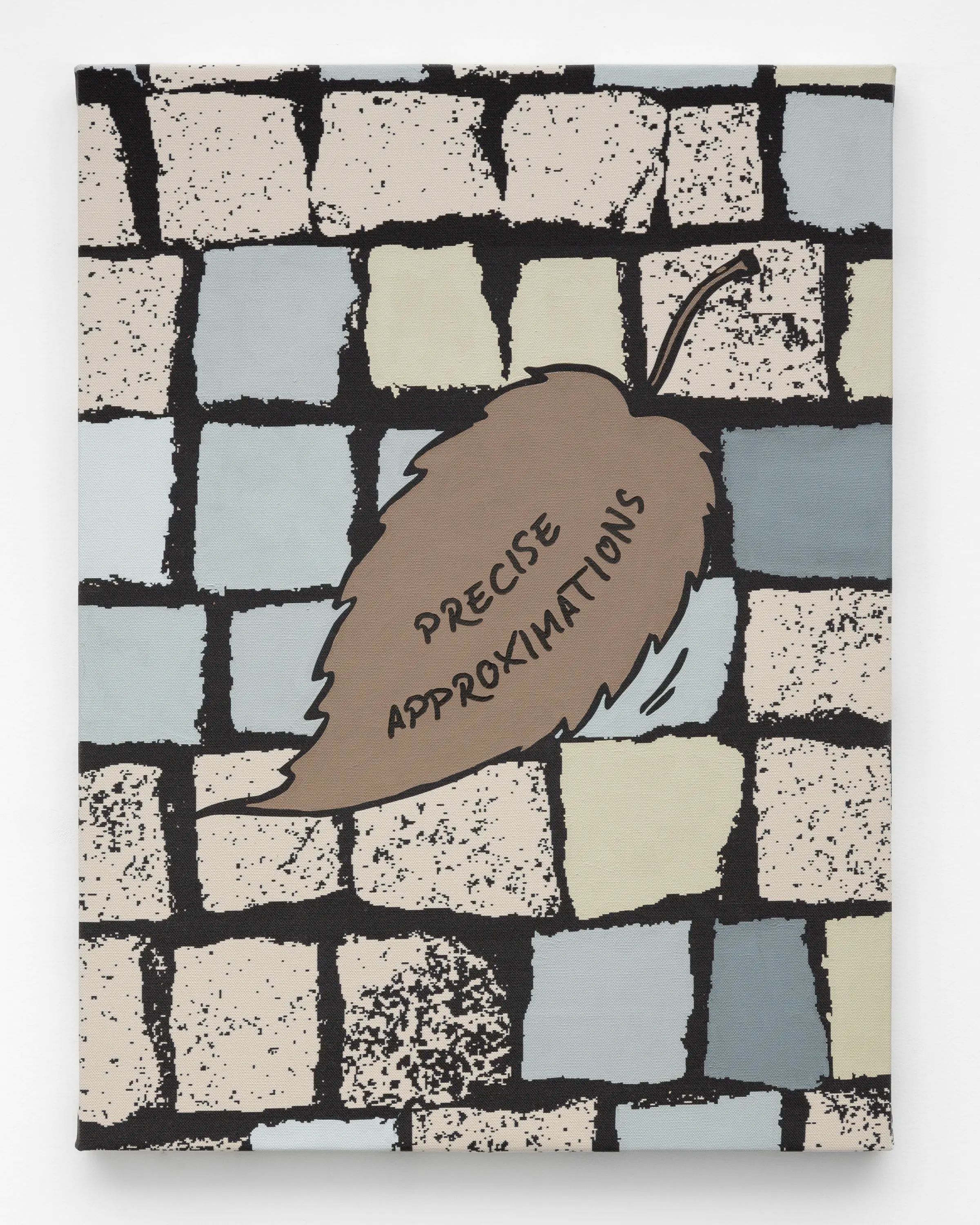
Cursed Virtues (Adjacency), 2022, Acrylic and inkjet on canvas, 24 1/8 x 17 7/8 in
With K-HOLE, Yago broke down shifting cultural and social trends in the commercial sphere and unpack its influence on the art world, providing artists with the strategies and language to reflect on the market forces enacted on them. “K-HOLE allowed me to speak to my peers, because ultimately what those reports were for artists to maybe have language or some framework for understanding shifts that are happening,” she elaborates. “We never really had the endgame in mind, we didn't know if we wanted to become a trend agency or if we wanted to stay in this conceptual art realm. But the critique of what we were doing was immediately subsumed into the sort of court jester version of itself – and I'm quite grateful for it, because I am able to get work because of that.”
Although K-HOLE disbanded in 2016, Yago continued to balance her consultancy work with her art practice. “On a functional level, I had to take on commercial work to support my art practice. This was trend forecasting primarily,” she explains. “What I realised as I started doing more research and strategy work was that there was an excess of information that was getting produced while I was doing that sort of commercial work, which had no place in that arena that has a really specific austere relationship to language and images. All the information that I was thinking about critically bled into my artwork.”
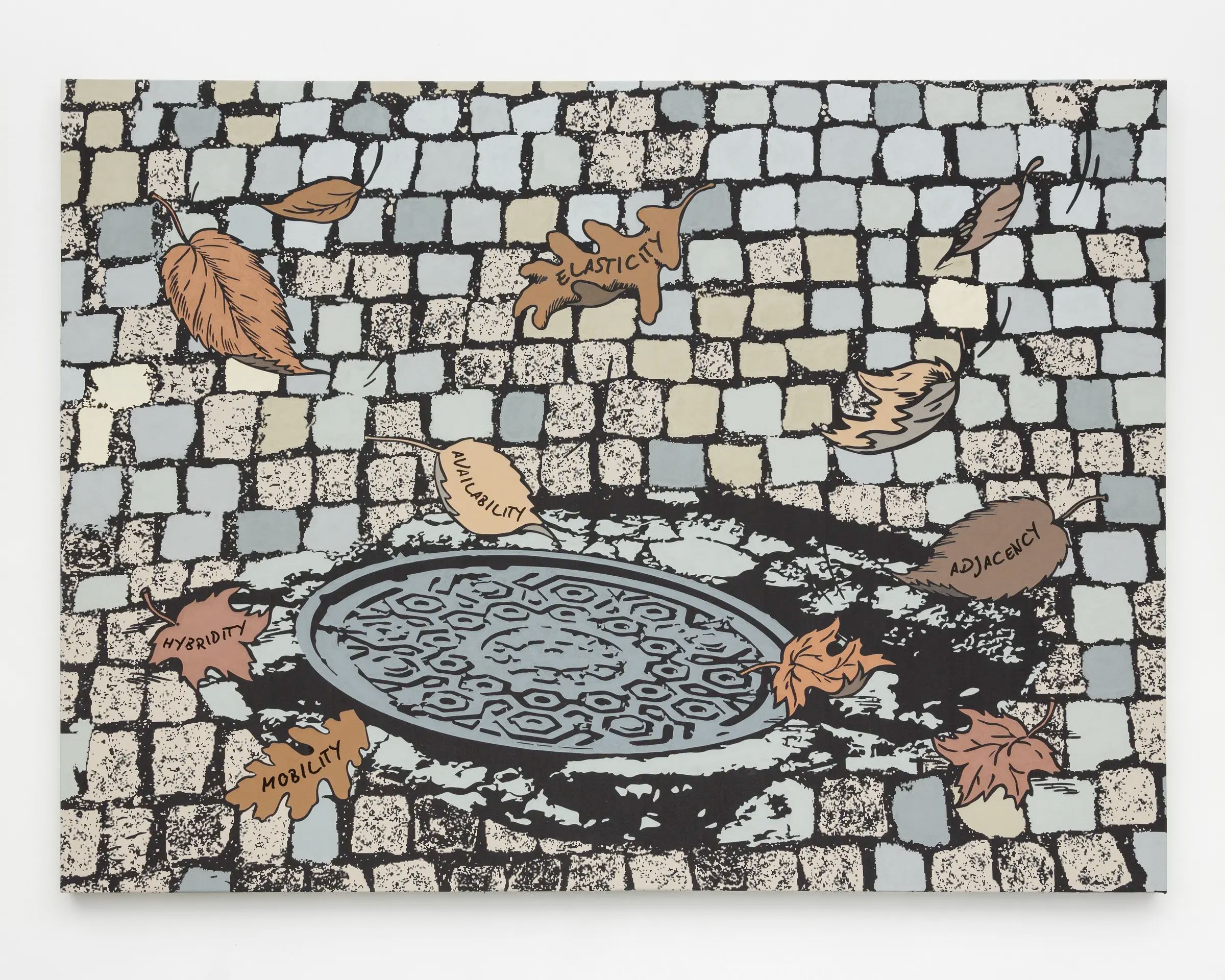
Cursed Virtues, 2022, Acrylic and inkjet on canvas, 50 x 67 7/8 in
On the surface, Yago’s artworks are deceptively simple. Mostly painted screens and large-scale wall paintings, they feature familiar on-screen characters like Big Mouth Billy Bass, 101 Dalmatians, the Cinderella birds, positioned like comic book strips in image-text format. Like mementos of a pre-internet past, their very mention is enough to conjure nostalgic memories of childhood. “They're images or objects that have a really dense semiotic significance,” agrees Yago. The precursor to the sort of online archetypes found in memes, these cartoons also function as harbingers of contemporary culture: “Everybody's bringing their own personal associations to these really universal images. Where does the meaning happen in the meeting of its cultural significance and the viewer’s personal relationship to it?”
In Dry Season (2020), Yago writes a play delivered through a group of harmonising Big Mouth Billy Bass animatronic fish. Each portraying an archetype (the nihilist, the toxic positivist, the trad), they enact something of a group therapy session, with each Billy Bass at odds with the others’ worldview. It’s an absurd premise but through humour (“It's sort of a laugh-cry”), Yago shines a light on the exploitation of capital, playing on Pieter Bruegel the Elder’s surreal tableau, “Big Fish Eat Little Fish”, which depicts countless fish falling out the mouth of a larger fish. “Billy Bass is in The Sopranos and has made its way through culture in a really bizarre way,” she says. “Sometimes I think about what is a certain character's semiotic tensile strength, what's its capacity for containing different material histories, or delivering different kinds of meaning?”
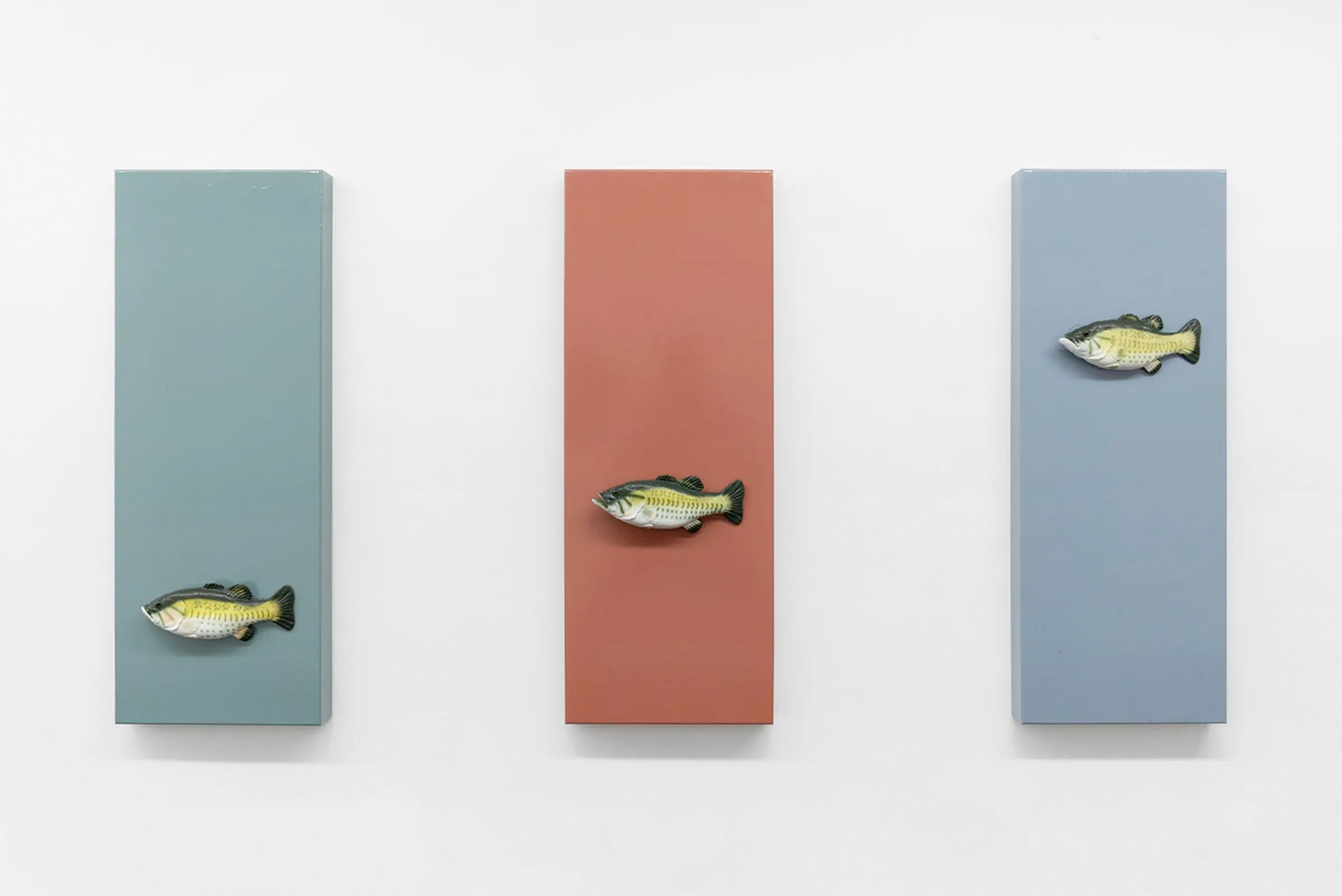
Pitcher, 2020, Chum, 2020, Pleader, 2020
Borrowing from the sort of instantly recognisable characters found across popular culture allows Yago to explore the issues facing artists, while appearing on the surface innocent and non-threatening – “it gets the pill down easier”. In doing so she draws on the ideas of situationist philosophers like Guy Debord, who sought to counter the way social and political interactions have become inherently image-led (“There were writers and thinkers that really believed in this extra capitalist alterity”). She compares her work to a visual essay, where short captions (usually written in a pseudo-corporate tone) double as digestible soundbytes to interrogate the relationship between art and industry, as well as the precarity of life under the gig economy. “I could write a couple 1000 word essay, but that's not going to communicate at the register that I'm trying.”
For example, in Industry City (2022), a series of paintings titled Cursed Virtues portray falling leaves with ultra-corporate buzzwords like “Elasticity”, “Adjacency” and “Hybridity”. “These things that were fed to us as promises for some emancipatory existence, but have come to only heighten our experience of precarity,” she says. “They're being sold through these virtues but they're truly curses.” Elsewhere, the animated bluebirds from Cinderella appear representations of domestic labour that is often invisible within the aestheticised landscape of cultural capitalism. “Contorted in form [and] subsumed by the flow,” reads an accompanying text box.
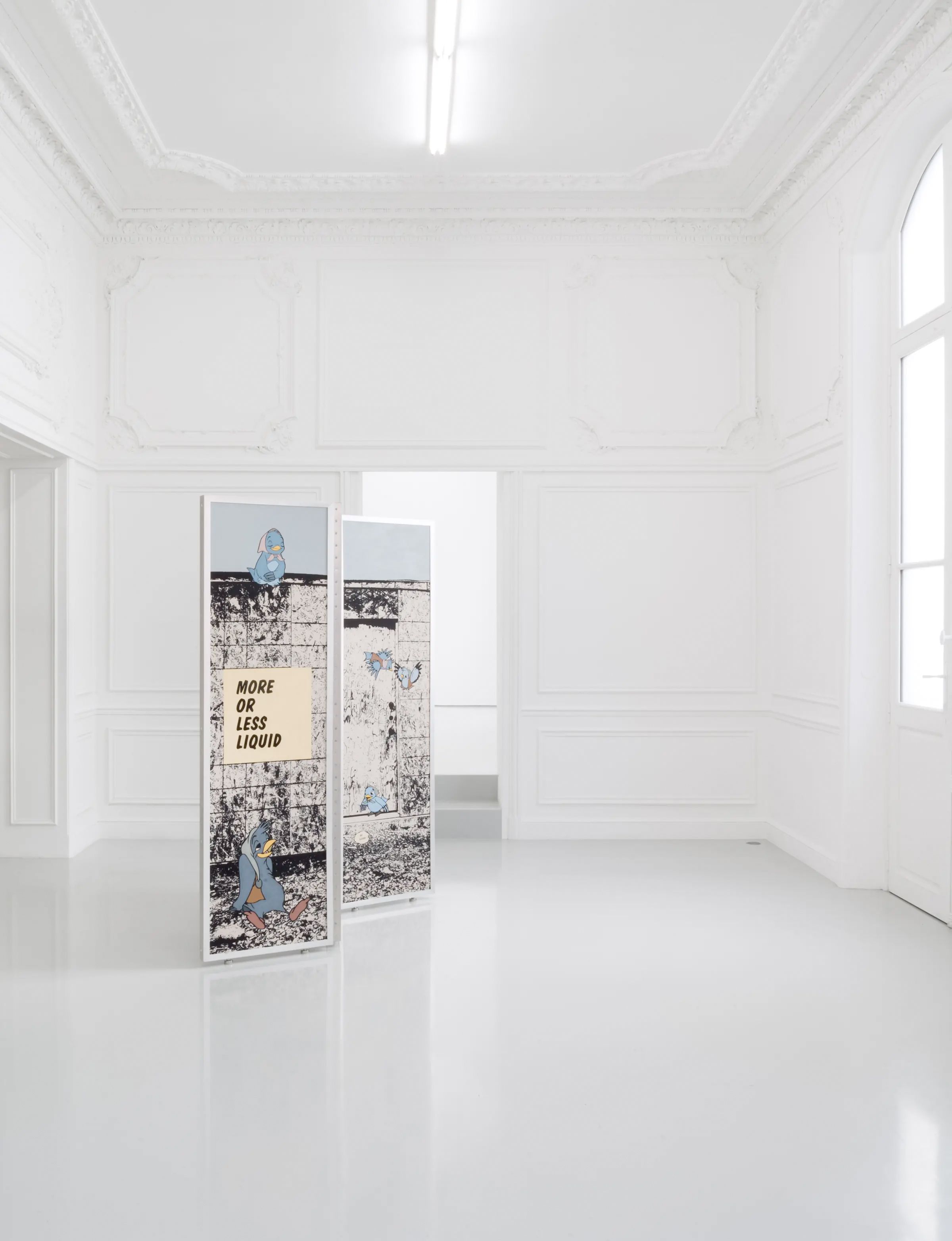
Installation view from "Industry City" at High Art in Paris, France, 2022
“The artworks that I'm making now which are these larger scale essayistic visual forms are kind of essayistic paintings,” explains Yago. “The content of those are really about the condition of being an artist of trying to make a life work under pretty hostile conditions and that is kind of like a reflection of the experiences that I have doing commercial labour, I also really wouldn't want to build a wall between the two because I think that that kind of furthers the fact that we have to take work to get by and that kind of normalises just independent wealth, which is rampant in the art world.”
In Content Industrial Complex, a 2018 essay published in e-flux journal, Yago explores the role of the artist as content creator. It’s a pipeline that reached a peak during the pandemic, as artists abandoned traditional institutions and studio models in exchange for online communities and subscription-based models such as Patreon and Substack. “It makes me really hopeful when I think about the things that are most exciting to me happening right now. It's people creating institutions on their own terms, like Montez Press Radio, DNR and New Models, there is a little bit more of a in- together or conversational exchange that's happening versus this extremely siloed, artist in a studio model, which is never what it's been.” While there have been recent upheavals in crowdfunded models, Yago remains hopeful: “Something that's so unique to artmaking and cultural production is that you have the opportunity to be a part of a community that's filled with true freaks,” she concludes. “Not to be romantic about it, but I think that's why I started making art.”
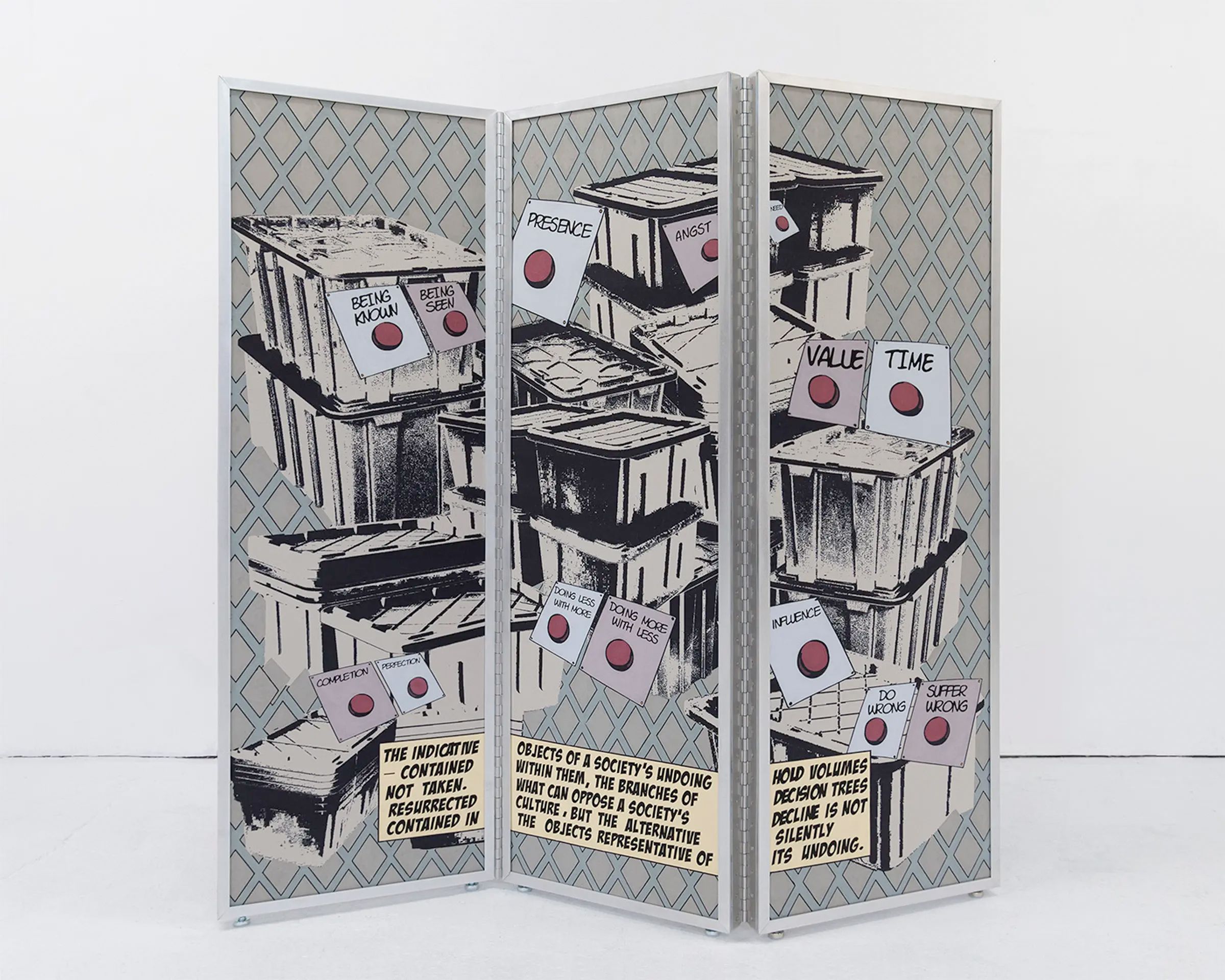
The Bins, 2021 Acrylic and inkjet on canvas in aluminum and stainless steel frame 73.5 x 73 x 3 in